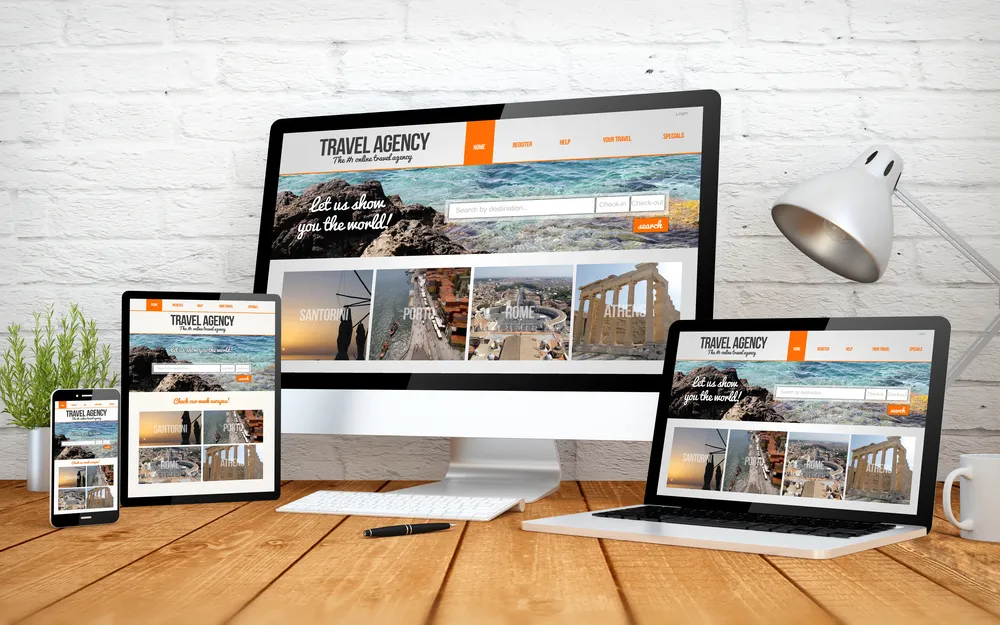How to Use Landing Pages to Convert More Website Visitors into Patients

In the rapidly evolving field of healthcare marketing, landing pages serve an essential function in converting casual website visitors into engaged patients. Unlike standard web pages, landing pages are meticulously crafted to drive conversions by concentrating on targeted messaging and clear calls to action. This discussion examines the significance of landing pages for healthcare websites, identifies the critical elements that contribute to their effectiveness, and outlines strategies for developing compelling landing pages that resonate with the target audience. By understanding these principles, healthcare organizations can enhance their online presence and attract a greater number of patients through effective landing page design.
Key Takeaways:
- Use clear and compelling headlines to grab the attention of website visitors and encourage them to take action on your landing page.
- Include trust signals and testimonials to establish credibility and build trust with potential patients.
- Regularly test and optimize your landing pages to ensure their effectiveness in converting visitors into patients.
What Are Landing Pages?
Landing pages are distinct web pages meticulously crafted for marketing campaigns, with the primary objective of increasing conversion rates by directing visitors toward a specific goal, typically through a compelling call to action (CTA).
By employing best practices in design techniques and user experience, landing pages can markedly improve the effectiveness of an online presence. It is essential that the content is optimized for mobile devices and features clear messaging that resonates with the target audience.
Additionally, fostering customer trust through transparent practices and pertinent information significantly enhances the landing page’s potential for lead generation.
How Do Landing Pages Differ from Other Web Pages?
Landing pages are distinct from other web pages primarily due to their specific focus and design, as they are meticulously created to drive user action towards a particular objective, in contrast to general web pages that may serve multiple purposes and convey a variety of information.
This targeted approach facilitates a streamlined user journey, guiding visitors through a carefully structured content hierarchy that emphasizes key messages and call-to-action buttons. By prioritizing essential elements, landing pages establish a clear path for users to follow, thereby increasing the likelihood of conversion.
The incorporation of high-quality images enhances visual appeal, effectively capturing visitors’ attention and encouraging further engagement.
To optimize the effectiveness of these pages, the use of analytics tools is essential. These tools enable marketers to monitor performance metrics, evaluate user behavior, and refine strategies, thereby ensuring the continuous enhancement of the user experience.
Why Are Landing Pages Important for Healthcare Websites?
Landing pages are integral to the digital strategy of healthcare websites, as they optimize conversion rates and enhance lead generation.
This is achieved through targeted messaging and effective user engagement strategies that resonate with potential patients seeking healthcare services.
What Are the Benefits of Using Landing Pages?
Utilizing landing pages provides a range of benefits, including improved conversion rates, enhanced insights through A/B testing, and an improved user experience, all of which contribute to a more effective online marketing strategy.
When a business implements well-designed landing pages, it creates a focused environment that minimizes distractions and directs visitors towards a specific call to action. For example, compelling headlines capture attention and establish clear expectations, resulting in a reduced bounce rate.
The capability to conduct A/B testing allows marketers to experiment with various elements such as imagery and copy to identify what resonates most effectively with their target audience. Additionally, incorporating gamification techniques can significantly boost user engagement, encouraging visitors to interact more with the content and ultimately increasing the likelihood of conversions.
This strategic combination of thoughtful design and analytical assessment fosters a deeper understanding of customer behavior, thereby facilitating future marketing initiatives.
How Do Landing Pages Help Convert Visitors into Patients?
Landing pages play a crucial role in converting visitors into patients by offering a focused experience that effectively guides users through their journey. A strong call to action is essential, as it encourages users to engage with healthcare services.
To achieve optimal results, effective landing pages feature intuitive navigation that allows users to easily locate the information they require. This straightforward approach is often complemented by multi-step forms that simplify complex processes into manageable tasks, thereby reducing feelings of overwhelm and enhancing user cooperation.
Furthermore, clear and compelling calls to action, strategically placed throughout the page, are vital for directing potential patients toward desired actions, such as scheduling appointments or requesting additional information. Collectively, these elements contribute to increased user engagement rates and assist in achieving conversion benchmarks.
What Elements Should Be Included in a Landing Page?
An effective landing page must incorporate several essential elements, including a clear and compelling headline, engaging visuals, persuasive copy, a strong call to action, and trust signals to reassure visitors.
Additionally, it is important to maintain an appealing layout design with optimized images that enhance the overall user experience.
1. Clear and Compelling Headline
A clear and compelling headline is essential for a landing page, as it serves as the initial point of contact and must immediately capture the attention of visitors, encouraging them to remain engaged and explore further.
Effective headlines not only generate interest but also communicate a strong message regarding the value being offered. For example, a headline such as “Unlock Your Business Potential with Our Proven Strategies” clearly informs visitors about what they can expect while appealing to their aspirations for growth.
To develop headlines that enhance conversion rates, it is crucial to incorporate powerful verbs and a strong call to action (CTA) that directly addresses the audience’s needs. Additionally, utilizing numerical data, such as “5 Ways to Boost Your Sales Today,” can render the proposition more tangible and persuasive, inviting visitors to engage further.
2. Engaging Visuals
Engaging visuals, including high-quality images and graphics, are imperative for a landing page, as they not only capture attention but also enhance the message and improve the overall user experience.
When these visuals are thoughtfully incorporated, they can greatly influence the effectiveness of the layout design. For example, compelling hero images can establish an emotional connection with potential customers, while lifestyle photographs can vividly illustrate user personas, demonstrating how a product integrates into their daily lives.
Furthermore, infographics and icons can simplify complex information, facilitating easier comprehension for users and ultimately leading to higher conversion rates.
In conclusion, the strategic use of visuals contributes to the creation of a cohesive and intuitive landing page that effectively directs users toward the desired action.
3. Persuasive Copy
Persuasive copy on a landing page is essential for effectively communicating the value proposition. It should address the needs and concerns of visitors while guiding them towards taking action.
To achieve this, it is imperative to focus on the potential benefits that the audience stands to gain, highlighting specific advantages that resonate with their desires and pain points.
By employing engagement strategies, such as posing rhetorical questions or utilizing compelling visuals, copywriters can capture attention and sustain interest.
Addressing potential objections directly can alleviate doubts and foster trust. Additionally, utilizing A/B testing can further refine the messaging, providing data-driven insights into which variations perform more effectively.
This ensures that the copy remains impactful and aligned with the expectations of the target audience.
4. Call-to-Action Button
A well-placed and thoughtfully designed call-to-action (CTA) button is an essential component of a landing page, serving as the primary prompt for user interaction and playing a critical role in conversion optimization. When executed with care, this important element not only guides potential customers toward a desired action but also significantly enhances the overall user experience.
The optimal placement of the CTA such as positioning it near the top of the page or following engaging content can greatly impact its effectiveness. Design elements, including color contrast, size, and clear wording, contribute to the button’s visibility and attractiveness.
To facilitate ongoing improvement, it is imperative to implement metrics tracking in order to analyze the performance of various CTAs. This analysis provides valuable insights into user behavior and preferences, ultimately fostering customer trust and encouraging conversions.
5. Trust Signals
Trust signals, including customer testimonials and clearly visible privacy policies, are vital components of a landing page, as they contribute to establishing credibility and reassuring visitors regarding the safety and legitimacy of the offered services.
These signals act as significant indicators of reliability and can substantially alleviate visitor anxiety, thereby making potential customers feel more at ease with their decisions.
Various forms of trust signals encompass social proof, such as user reviews and ratings, which highlight positive customer feedback and experiences, in addition to recognizable security badges that affirm safe transaction processes.
By strategically integrating these elements, businesses can cultivate a sense of trustworthiness, ultimately leading to an increase in conversion rates.
A landing page enhanced with effective trust signals not only promotes user engagement but also enhances the overall customer journey, thereby ensuring a more successful online presence.
6. Testimonials
Incorporating customer testimonials on a landing page can significantly enhance its effectiveness by providing social proof and establishing credibility, ultimately influencing the decision-making process of potential patients.
When strategically placed, these testimonials can effectively guide visitors through the content hierarchy, highlighting the most compelling aspects of a service. Among the various forms of testimonials, video testimonials stand out due to their capacity to foster a more personal connection, allowing potential patients to observe and hear real experiences from satisfied clients.
Star ratings serve to visually communicate satisfaction levels at a glance, fostering trust and enhancing engagement. As these elements work in tandem, they play a crucial role in improving conversion rates, increasing the likelihood that potential patients will reach out and engage with healthcare providers.
7. Forms for Appointment or Consultation Requests
Effective appointment or consultation request forms on a landing page should be user-friendly and optimized to streamline the lead generation process. Utilizing multi-step forms can enhance the user experience significantly.
By incorporating simplified forms that facilitate easy navigation through the fields, businesses can considerably improve their conversion rates. It is essential to consider the length of the form; research indicates that shorter forms typically yield more favorable results, as they require less commitment from users at the outset.
Employing a variety of field types, such as dropdown menus or checkboxes, can simplify the input process, making it less intimidating for users.
These considerations are consistent with established conversion benchmarks, ensuring that forms not only capture essential information but also do so in a manner that promotes user engagement and completion.
How to Create Effective Landing Pages for Healthcare Websites?
Developing effective landing pages for healthcare websites requires a thorough understanding of the specific needs of the target audience. It is essential to employ marketing strategies that align with user personas while also ensuring that the pages are optimized for mobile devices.
This optimization is crucial to enhance accessibility and engagement, ultimately leading to improved user experience and conversion rates.
1. Define Your Target Audience and Their Needs
Defining the target audience and understanding their needs constitutes the initial and critical step in developing an effective landing page, particularly for healthcare services. This knowledge facilitates the creation of tailored messaging and design.
Such insights give the power to businesses to generate content that resonates with their audience, thereby fostering a deeper connection and encouraging engagement. Techniques such as user surveys and interviews prove to be instrumental in gathering valuable information regarding preferences and pain points.
Additionally, metrics tracking tools aid in monitoring user behavior, providing data that can further refine user personas.
Establishing customer trust through transparency and addressing specific needs not only enhances the overall experience but also lays a solid foundation for long-term relationships. It is essential to bridge the gap between the services offered and audience expectations to achieve sustained success.
2. Use a Consistent Branding and Design
Utilizing consistent branding and design across landing pages is essential for enhancing user experience and establishing a recognizable online presence, which significantly contributes to building customer trust.
When brands implement cohesive branding elements, such as complementary color schemes, carefully selected fonts, and visually appealing logos, they create a harmonious aesthetic that captures attention and promotes engagement. These visual components not only direct the visitor’s focus but also evoke emotions associated with the brand’s identity, thereby improving the overall layout design.
A meticulously curated color palette can instill a sense of calm or urgency, while distinct typography reinforces the brand’s voice. For more insights on enhancing your website’s effectiveness, check out How to Use Landing Pages to Convert More Website Visitors into Patients.
Such deliberate integration ensures that the audience can navigate the site with ease, making it vital for any business that aims to connect authentically with its customers.
3. Keep the Page Simple and Easy to Navigate
An effective and user-friendly landing page is essential for maintaining user engagement, as it enables visitors to quickly locate the information they seek without unnecessary distractions, thereby promoting a clean design approach.
To accomplish this, designers should prioritize the intuitive placement of elements, ensuring that key navigation links are prominently displayed and easily accessible. Utilizing familiar layouts can facilitate a seamless user experience, while a logical content hierarchy aids users in anticipating the location of specific information.
Mobile optimization is also critical, given the increasing number of users accessing information via smartphones; thus, responsive design should be a fundamental consideration throughout the design process.
Furthermore, incorporating effective engagement strategies, such as interactive elements that encourage exploration without overwhelming the user, will significantly enhance the overall experience.
4. Use Keywords and SEO Best Practices
Incorporating keywords and adhering to SEO best practices are essential for optimizing landing pages, as these elements significantly enhance visibility in search engine results and attract targeted traffic to your website.
To effectively improve the performance of these pages, it is imperative to consider strategic keyword placement, ensuring that both primary and secondary keywords are integrated naturally within headings, subheadings, and throughout the content.
This approach not only helps maintain a clear content hierarchy that benefits both users and search engines but also increases the likelihood of engaging users actively seeking relevant information.
Utilizing analytics tools provides valuable insights into user behavior, allowing for adjustments based on traffic targeting and performance metrics.
Ultimately, a well-structured landing page can lead to increased engagement and higher conversion rates, making it an essential component of any successful digital marketing strategy.
5. Test and Optimize Your Landing Pages
Regular testing and optimization of landing pages through A/B testing is essential for enhancing conversion rates, as it enables a comprehensive understanding of user behavior and preferences.
By utilizing various iterations of content, design, or calls to action, one can obtain valuable insights into what resonates with the target audience. It is imperative to begin by identifying key conversion benchmarks relevant to specific goals, such as increasing sign-ups, purchases, or downloads.
Selecting appropriate user engagement metrics, including click-through rates, bounce rates, and time spent on the page, is crucial for accurate performance evaluation.
Following the completion of tests, results should be analyzed by comparing performance against established benchmarks, while also considering statistical significance to ensure the reliability of findings.
This iterative process promotes continuous improvement, allowing for the adaptation of landing pages to meet the evolving needs of the audience.
Examples of Successful Landing Pages for Healthcare Websites
Successful landing pages for healthcare websites typically exhibit shared characteristics that significantly enhance user engagement, foster trust, and improve conversion rates.
These pages achieve this by employing established design techniques and providing relevant content specifically tailored to the target audience.
1. Landing Page for a Specific Procedure or Treatment
A landing page dedicated to a specific procedure or treatment must clearly articulate the benefits, provide comprehensive information, and incorporate trust signals, such as testimonials, to cultivate user trust and encourage conversions.
Plus these elements, it is essential for the page to maintain a clear content hierarchy, effectively guiding potential patients through the information.
The judicious use of headings, bullet points, and visuals, as well as optimized images and clear copy, can significantly enhance comprehension and retention while adhering to best practices in conversion optimization.
To prompt immediate action, the strategic placement of a compelling call to action (CTA) is vital, directing visitors to take the next step, whether that involves scheduling a consultation or downloading valuable resources. Employing directional cues and layout design techniques enhances user engagement by clearly guiding the visitor.
Ultimately, a well-structured landing page serves not only to inform but also to motivate users, ensuring they feel confident in their decision-making process. This involves leveraging user experience principles and traffic targeting to effectively reach the intended audience.
2. Landing Page for a Special Offer or Promotion
A landing page designed for a specific offer or promotion should prioritize urgency and value, employing compelling headlines and clear calls to action (CTAs), alongside techniques such as A/B testing and template usage, to significantly enhance conversion rates.
To effectively engage visitors, the use of techniques such as countdown timers can instill a sense of urgency, encouraging potential customers to act promptly. Gamification techniques can also be incorporated to increase user engagement and drive action.
Additionally, prominently featuring customer feedback and customer testimonials can bolster credibility by showcasing authentic testimonials that validate the value of the offer. This approach is essential for building trust, which is crucial for fostering conversions and enhancing customer trust.
Clarity is of utmost importance; utilizing straightforward language that articulates the benefits and features without resorting to jargon ensures that the message is well understood. This is particularly effective when combined with clean design and intuitive navigation.
A strong call to action not only guides the user but also motivates them to take the next step, emphasizing the significance of the offer and prompting immediate engagement, even on mobile devices through mobile optimization and device responsiveness.
3. Landing Page for a Free Consultation or Appointment
A landing page designed to promote a free consultation or appointment should highlight the value of the offer, fostering a sense of accessibility and facilitating lead generation through simplified forms. This should include engaging educational content that aligns with marketing strategies and resonates with user personas.
By streamlining these forms to minimize the number of required fields, potential leads are less likely to feel overwhelmed during their user journey. It is essential to ensure that the forms incorporate clear messaging about the benefits of the consultation, thereby reinforcing to visitors the advantages of engaging with the service. Employing multi-step forms can further enhance the user journey by breaking down information into manageable sections.
This strategic approach not only enhances the likelihood of capturing leads but also aligns with conversion benchmarks that many businesses strive to achieve. By clearly outlining what leads can expect after signing up, organizations can further enhance trust and encourage sign-ups, ultimately leading to stronger engagement with their audience. Tracking landing page metrics with analytics tools such as Google Analytics can provide valuable insights for ongoing optimization.
4. Landing Page for a New Patient Welcome Packet
A landing page for a new patient welcome packet must effectively convey essential information while establishing trust and enhancing user engagement through clear navigation and valuable resources. Ensuring the inclusion of a comprehensive privacy policy further builds confidence among new patients.
To ensure a seamless experience, the page should include an easy-to-understand overview of the services offered, details about the healthcare team, and an accessible privacy policy that assures patients of confidentiality. High-quality images of the healthcare environment and team members can enhance visual appeal and trust.
Incorporating customer testimonials can significantly enhance credibility, as potential patients value insights from individuals who have previously benefited from the care provided. This social proof is a critical element of effective engagement strategies in healthcare marketing.
Moreover, clear calls to action, such as options for scheduling appointments or contacting support, should be prominently displayed to facilitate the users journey. These elements should be placed above the fold to capture attention immediately upon page load.
Ultimately, this focused approach not only enhances the patient’s initial experience but also fosters a long-term relationship built on trust and transparency. Incorporating branding elements ensures consistency in online presence, reinforcing the healthcare provider’s identity.
Frequently Asked Questions
What are landing pages and how can they help convert website visitors into patients?
Landing pages are standalone web pages that are specifically designed to capture the attention of a specific audience, usually through a call to action. They can help convert website visitors into patients by providing targeted information and making it easy for them to take the next step in becoming a patient. Using visual elements and a strong CTA aids in directing visitors effectively.
How can I create an effective landing page for my healthcare website?
To create an effective landing page, you should first define your target audience and their specific needs and desires. Then, you should use compelling and concise copy, eye-catching design, and a clear call to action, supported by A/B testing and device responsiveness, to encourage website visitors to take the next step towards becoming a patient.
What types of information should I include on my landing page to convert website visitors into patients?
The most important information to include on a landing page is the value and benefits of your healthcare services, as well as any special offers or incentives. You should also highlight any unique selling points that set your practice apart from others, such as specialized treatments or experienced staff, using a clear content hierarchy to prioritize key messages.
How can I track the success of my landing page in converting website visitors into patients?
You can track the success of your landing page by using tools like Google Analytics and conversion tracking. This will allow you to see how many visitors are taking the desired action on your landing page, and make any necessary adjustments to improve its effectiveness. Regular metrics tracking helps to ensure alignment with the latest 2024 Conversion Benchmark Report.
Should I have multiple landing pages on my healthcare website?
It is recommended to have multiple landing pages on your healthcare website, each targeting a specific audience or service. This will allow you to cater to different needs and interests, and increase the chances of converting website visitors into patients with a customized approach that incorporates effective marketing strategies and traffic targeting.
What are some common mistakes to avoid when creating a landing page to convert website visitors into patients?
Some common mistakes to avoid when creating a landing page include having too much text, not using visuals or media to make the page visually appealing, and not having a clear call to action. It is also important to regularly update and test your landing page to ensure it is optimized for conversion using platforms like Unbounce and Landingi.











